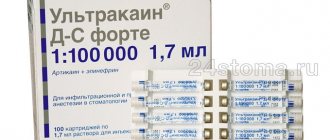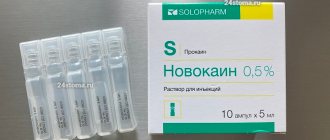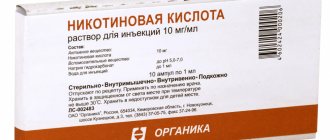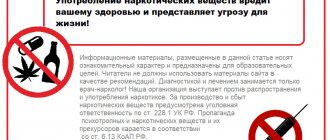Pharmacodynamics and pharmacokinetics
Articaine is a thiophene and has a local anesthetic effect. Used for conduction and infiltration anesthesia . Articaine undergoes hydrolysis in a slightly alkaline environment of tissues with the release of a base that has lipophilic properties, and therefore easily penetrates through the cell membrane into the nerve fiber.
By influencing receptors, it blocks the delivery of sodium ions into the cell and the conduction of impulses along nerve fibers. The effect of the drug is observed immediately after its administration and lasts from 1 to 3 hours. Efficiency is reduced in acidic environments.
When administered intramuscularly, Cmax is achieved within 20 to 40 minutes.
When introduced under the mucous membrane of the oral cavity, it exhibits high diffusion ability.
95% bound to plasma proteins.
Metabolized in the liver, T½ is approximately 60 – 80 minutes.
Within 6 hours, 54 - 63% is excreted by the kidneys.
Can penetrate the placental barrier (to a lesser extent than other local anesthetics); it penetrates the blood-brain barrier in small quantities. It is practically not excreted in breast milk.
ARTICAINE – HISTORY OF CREATION AND IMPLEMENTATION INTO CLINICAL PRACTICE
P.Yu. Stolyarenko
State Educational Institution of Higher Professional Education SamSMU Roszdrav
Articaine is the first local anesthetic of the amide group, having a thiophene ring instead of a benzene ring and an additional ether intermediate chain. It differs from other drugs in a number of advantages, which allowed it to take first place in terms of effectiveness/safety ratio. Today, articaine is one of the most common local anesthetics used in dental practice.
Articaine is a chemical compound for local anesthesia. Opened, developed and implemented by Hoechst AG (which later became part of the Sanofi-Aventis concern).
The synthesis of articaine and registration of the patent were carried out in 1969 in Germany by Professor of Chemistry, Honorary Doctor Heinrich Ruschig (Heinrich Ruschig, 1906 - 1991), Robert Rippel in the laboratory of Hoechst AG. In the same year, 1969, there were the first publications about articaine in the Netherlands. Identification of anesthetic properties and study as a medicine was carried out by physician and pharmacologist Professor Roman Muschaweck - fig. 1. In 1973, he studied the analgesic activity of the drug under superficial and infiltration anesthesia. Then the anesthetic effect during conduction anesthesia was studied.
The next stage was general pharmacological studies of the effect on isolated organs (heart - Langendorff, intestine - Magnus, ear - Pissemskt, etc.). Next, the effect on blood pressure was studied and toxicity was studied. After these successful experimental studies in animals, the way was opened for clinical trials in humans. In 1972, at a conference in Landau, the first results of the use of articaine were reported, and thanks to its high activity, low toxicity and good tolerability, the drug quickly entered everyday practice. In 1974, a group of researchers received patent No. 3855243 from Hoechst AG. Name "3-Aminoacylamino Thiophenes". Authors: Roman Muschaweck (Frankfurt am Main), Robert Rippel (Hofheim, Taunus), Heinrich Ruschig (Bad Soden, Taunus), Manfred Schorr (Frankfurt am Main). Application submitted October 1, 1973. Published December 17, 1974.
Schulze-Husmann M. defended his dissertation in Bonn in 1974 on the topic “Experimental testing of the new local anesthetic ultracaine in dental practice.” Since 1974, clinical trials of articaine have been carried out at the University Hospital of Frankfurt in the department of Doctor of Medicine, Professor G. Frenkel and other medical institutions in Germany. In 1975, articaine was approved for use as a local anesthetic. The market introduction of the registered drug "Ultracain" began in January 1976. Until 1984, the international non-proprietary name of the drug was "carticaine/HOE 40 045", later the drug became known as "articaine". The development company sells it under the brand names Ultracain® D-S, Ultracain® D-S Forte and Ultracain® D.
Introduction into clinical practice
Articaine was introduced into clinical practice in 1974 by R. Mushavek (Fig. 1) and R. Rippel after the publication of the article “A new local anesthetic (Carticaine) from a thiophene ring” in the journal Practical Anesthesiology. The drug has a reliable anesthetic effect - with conservative treatment, the proportion of cases of successful anesthesia is 99%, with surgical interventions - 98.5% (according to Woerner H, Mayer R., 1976).
Since 1976, articaine has been widely used in Germany () and Sweden, since 1978 - in the Netherlands, since 1980 - in Austria and Spain, since 1982 - in Canada (Zorcaine®, Astracaine Forte, Ultracain DS Forte, Septanest SP ), since 1984 - in Hungary, since 1998 - in the UK. In the United States, articaine was initially treated with caution, with skepticism and criticism among researchers and clinicians. The therapeutic use of this drug was reviewed for more than 5 years before the Food and Drug Administration (FDA) approved this drug for therapeutic use in the United States, and only at a concentration of 1:100,000 epinephrine (Septocaine® , Septodont Inc, April 2000). This is despite the fact that 1:200,000 epinephrine concentrations have been available in Europe and Canada since 1976 and 1982, respectively. Approval for the formulation of articaine with 1:200,000 epinephrine was received in June 2006 - Articadent®.
Rice. 1.Dr. _ Roman Muschaweck (1919-2007). German pharmacologist and toxicologist who has received worldwide recognition. Synthesized diuretics (Arelix®, Lasix), blood substitute (Haemaccel®) and local anesthetic articaine (Ultracain®)
In Russia, ultracaine has been approved for use since 1990, in dentistry since 1994. The first testing was carried out by Professor I.A. Shugailov and his staff at the Moscow Medical Dental Institute (now the State Educational Institution of Higher Professional Education "Moscow State Medical and Dental University"). Two international symposiums “New technologies of local anesthesia in dentistry” were organized in Moscow (together with the companies Hoehst in 1994 and Septodont in 1995), at which the main pharmacological properties of articaine were discussed and foreign and domestic dentists shared their experience of using the drug. According to R. Rahn (1996), HG Grigoleit (1996), SF Malamed (1997), as well as Russian dentists, articaine is 4-5 times more active than novocaine, lidocaine 1.5 times. In adult patients, the effectiveness of anesthesia when using it reaches 95-100%. An important feature of articaine is its high diffusion ability, local anesthetic activity and degree of safety (Shugailov I.A., 1996; Stolyarenko P.Yu., 1997; Rabinovich S.A., 2000, etc.). Articaine today is a commonly used local anesthetic in dental practice in Germany, Switzerland, Austria, France, Poland, the Czech Republic and other countries (Rahn R., Bell B., 2001).
Currently, drugs based on articaine are produced by many foreign companies. In Russia, ultracaine (D-S, D-S forte and D) is approved for use in dentistry (the designation “D” indicates that it is an anesthetic for dental practice (Dental), “C” contains adrenaline (Suprarenin)) and generics: septanest , alfacaine, ubistezin, primacaine, cytocartin, articaine INIBSA and articaine is currently produced by two domestic pharmaceutical companies: Brilocaine®-adrenaline (1:200,000) and Brilocaine®-adrenaline forte (1:100,000) JSC "Bryntsalov-A" in carpules 1.8 ml each; Artifrin-Zdorovye (1:200,000) and Artifrin-Zdorovye forte (1:100,000) LLC “Zdorovye” in 1.7 ml carpules.
In Germany, articaine is the most used local anesthetic in dentistry, and its market share, according to R. Rahn (1996, 2001), W. Jakobs (2009), is 90%. While lidocaine is the most common local anesthetic worldwide, in Central Europe articaine has the largest market share (Daublaender M., 2005). Since June 2006, in Germany, 3M ESPE has been producing ubistezin 1:400,000, used in dentistry for infiltration and conduction anesthesia for ordinary (routine) interventions lasting up to 30 minutes (simple tooth extraction, preparation of a carious cavity).
Many dentists contributed to the introduction of articaine into dental practice, including Rainer Rann, Monika Doublander, Wolfgang Jacobs, Stanley Malamed, Jean-Frederic Andre, I.A. Shugailova, A.Zh. Petrikasa, S.A. Rabinovich (Fig. 2-9).
Rice. 2. Rainer Rahn. Private Associate Professor, Doctor of Medicine and Dentistry. The main works on pain relief are devoted to the choice of local anesthetics in patients with general somatic diseases and risk factors. Frankfurt am Main, Germany. President of EFAAD 2003-2004
Rice. 3. Monika Daublaender . Private Associate Professor, Doctor of Medicine and Dentistry. Chief physician of the dental surgery clinic of the Johannes Guttenberg University in Mainz (Germany). The main works are devoted to local anesthesia and vasoconstrictors in dentistry, the organization of treatment of patients with risk factors, and chronic pain in the maxillofacial area. President of EFAAD 2005-2006
Rice. 4. Wolfgang Jacobs (Dr. Dr. Wolfgang Jakobs) – private institute of dental implantology and aesthetic dentistry, treasurer of IFDAS (Speicher, Germany) Fig. 5. Professor I.A. Shugailov is the founder and head of the Department of Anesthesiology and Reanimatology of the Faculty of Advanced Dentistry of the Moscow Medical Institute (1986–1997), Head of the Department of Dentistry of the Russian Medical Academy of Postgraduate Education of the Ministry of Health of the Russian Federation from 1997 to the present. He has developed a series of carpule injectors, which have been tested in our country, Western Europe, the USA, and New Zealand and have been highly praised by specialists.
Rice. 6. Professor A.Zh. Petrikas is the head of the department of therapeutic dentistry at the Tver State Medical Academy. Conducts clinical and experimental studies of local anesthetics with an emphasis on adverse reactions from the cardiovascular system. Author of seven monographs, incl. “Dental Anesthesia” (1997), and many articles concerning various aspects of anesthesia in dental treatment
Rice. 7. Professor S.A. Rabinovich is the head of the Department of General Dentistry and Anesthesiology of the Faculty of Physical Education at Moscow State Medical University. Organizer and head of the Russian section of the World Association for Dental Pain Management (IFDAS). Elected President of the European Association for the Advancement of Pain Management in Dentistry (EFAAD)
Rice. 8. Stanley F. Malamed , Doctor of Dental Surgery, Professor of Anesthesiology and Medicine. University of Southern California School of Dentistry. Los Angeles, USA. Author of a comprehensive guide to local anesthesia, which has gone through 4 editions
Rice. 9. Professor Jean- Frederic Andre (France). President of the European Association for Pain Management in Dentistry (EFAAD), head of the dental clinic (Evian, France)
I express my gratitude and deep gratitude to Mr. Dr. Herbert Wilms, Mr. Dr. Horst Luckey, Mr. Dr. Rainer Rahn, Ms. Monika Daublaender and Ms. Carolin Goedde for their advisory assistance in the preparation of these materials.
List of references – from the author (e-mail)
Contraindications
- children under 4 years of age;
- increased sensitivity to local anesthetics of the amide group;
- paroxysmal tachycardia;
- B12 deficiency anemia (megaloblastic);
- angle-closure glaucoma;
- atrial fibrillation;
- bronchial asthma;
- chronic hypoxia.
Prescribe with caution:
- for pathologies of the central nervous system;
- with pseudocholinesterase deficiency;
- with pernicious anemia;
- with hypoxia.
Reviews from dentists about the drug Articaine
Most practicing dentists consider Articaine to be the best representative of local anesthetics due to its high effectiveness. At the same time, when using the medication, there is a low incidence of allergic reactions, the possibility of safe use in pregnant women, and the absence of addiction. The only small drawback of Articaine, according to experts, is the inability to prescribe it to children under 4 years of age. In all other cases, Articaine is rightly called one of the drugs of choice.
This information is intended for medical professionals and specialists.
Side effects
Peripheral and central nervous system:
- headache;
- dyspnea;
- visual impairment;
- apnea;
- muscle twitching;
- tremor;
- convulsions;
- diplopia;
- disturbance of consciousness.
The cardiovascular system:
- bradycardia;
- tachycardia;
- decrease in blood pressure.
Digestive system:
- nausea;
- diarrhea;
- vomit.
Allergic manifestations:
- itching;
- skin rash;
- angioedema;
- very rarely - anaphylactic shock.
Articaine
Manufacturer: BINERGIA CJSC (Russia)
solution for injection 40 mg/ml: 1.7 ml cartridges 10, 50 or 100 pcs., 1 ml or 2 ml amp. 5, 10, 20 or 50 pcs. Reg. No.: LSR-008522/10
Clinical and pharmacological group:
Local anesthetic for use in dentistry
Release form, composition and packaging
Injection
transparent, colorless or with a yellowish tint.
| 1 ml | |
| articaine hydrochloride | 40 mg |
Excipients:
sodium chloride 2.1 mg, water for up to 1 ml.
1.7 ml - cartridges (10) - contour plastic packaging (1) - cardboard packs. 1.7 ml - cartridges (10) - contour plastic packaging (5) - cardboard packs. 1.7 ml - cartridges (10) - contour plastic packaging (10) - cardboard packs. 1.7 ml - cartridges (10) - contour cell packaging (1) - cardboard packs. 1.7 ml - cartridges (10) - contour cell packaging (5) - cardboard packs. 1.7 ml - cartridges (10) - contour cell packaging (10) - cardboard packs. 1.7 ml - cartridges (10) - cardboard inserts (1) - cardboard packs. 1.7 ml - cartridges (10) - cardboard inserts (5) - cardboard packs. 1.7 ml - cartridges (10) - cardboard inserts (10) - cardboard packs. 1 ml - glass ampoules (5) - plastic contour packages (1) - cardboard packs. 1 ml - glass ampoules (5) - plastic contour packages (2) - cardboard packs. 1 ml - glass ampoules (5) - contour cell packaging (1) - cardboard packs. 1 ml - glass ampoules (5) - contour cell packaging (2) - cardboard packs. 2 ml - glass ampoules (5) - plastic contour packages (1) - cardboard packs. 2 ml - glass ampoules (5) - plastic contour packages (2) - cardboard packs. 2 ml - glass ampoules (5) - contour cell packaging (1) - cardboard packs. 2 ml - glass ampoules (5) - contour cell packaging (2) - cardboard packs. 1 ml - glass ampoules (5) - contour plastic packaging (20) - cardboard boxes. 1 ml - glass ampoules (5) - contour plastic packaging (50) - cardboard boxes. 1 ml - glass ampoules (5) - contour cell packaging (20) - cardboard boxes. 1 ml - glass ampoules (5) - contour cell packaging (50) - cardboard boxes. 2 ml - glass ampoules (5) - contour plastic packaging (20) - cardboard boxes. 2 ml - glass ampoules (5) - contour plastic packaging (50) - cardboard boxes. 2 ml - glass ampoules (5) - contour cell packaging (20) - cardboard boxes. 2 ml - glass ampoules (5) - contour cell packaging (50) - cardboard boxes.
Description of the active components of the drug "Articaine"
pharmachologic effect
Local anesthetic of the amide type of the thiaphene series. The mechanism of action is due to the stabilization of neuronal membranes and the prevention of the occurrence and conduction of a nerve impulse. The anesthetic effect develops within 1-11 minutes and lasts for 60-225 minutes.
Indications
Infiltration and conduction anesthesia for surgical and diagnostic interventions, in obstetrics, and for pain syndromes.
Dosage regimen
Individual, depending on the indications and dosage form used.
Maximum single dose:
6 mg/kg.
Side effect
From the central nervous system and peripheral nervous system:
headache, blurred vision, dyspnea, apnea, tremor, muscle twitching, convulsions; rarely - impaired consciousness, blurred vision, diplopia, blindness.
From the digestive system:
nausea, vomiting, diarrhea.
From the cardiovascular system:
rarely - decreased blood pressure, tachycardia, bradycardia.
Allergic reactions:
rarely - skin rash, itching, rhinitis, angioedema, anaphylactic shock.
Contraindications
Meningitis, tumors, polio, intracranial bleeding. Osteochondrosis, spondylitis, tuberculosis or metastatic lesions of the spine, pernicious anemia with neurological symptoms, heart failure in the decompensation phase, massive pleural effusion, significantly increased intra-abdominal pressure, severe ascites, abdominal tumors, severe arterial hypotension (cardiogenic or hypovolemic shock), septicemia, pustular skin lesions at the injection site, blood clotting disorders or anticoagulant therapy, intravenous regional anesthesia according to Bier. Hypersensitivity to amide-type local anesthetics.
Pregnancy and lactation
When used in obstetrics, especially with paracervical blockade, fetal bradycardia is possible.
Articaine is excreted in breast milk in clinically insignificant quantities, therefore, if it is necessary to use it in a mother during lactation, it is not necessary to interrupt breastfeeding.
special instructions
It should be used with caution and according to strict indications for pseudocholinesterase deficiency, vegetative-vascular dystonia, central nervous system diseases, pernicious anemia, and conditions of chronic hypoxia.
Can be used in combination with epinephrine and glucose solution.
Drug interactions
Tricyclic antidepressants enhance the hypotensive effect of articaine.
Drug interactions
Tricyclic antidepressants enhance the hypotensive effect of articaine.
Instructions for use of Articaine (Method and dosage)
The instructions for Articaine in dentistry suggest an individual dosage regimen, depending on the severity of the procedure, the time of its implementation and the patient’s tolerability of the drug.
The maximum single dose of the drug is 6 mg per kilogram of body weight.
To carry out surgical intervention, which requires more time than Articaine can provide, a combination drug is used - Articaine Inibsa Epinephrine as active ingredients . Epinephrine exhibits a vasoconstrictor effect at the site of drug administration, thereby increasing its absorption time, prolonging its effect.
Instructions for use of the drug Articaine Epinephrine in dentistry recommend the following doses of the drug.
During the procedure for removing teeth of the upper jaw without complications and inflammation - 1.7 ml of the drug per tooth, if ineffective, another 1 ml - 1.7 ml.
For a palatal incision or suture - 0.1 ml.
When grinding teeth to install crowns or prepare cavities, a vestibular injection is given in a dose of 0.5 ml - 1.7 ml for each tooth.
During the procedure for removing premolars of the lower jaw without complications, infiltration anesthesia , which acts as a conduction anesthesia.
The maximum dose in dentistry for adult patients is 7 mg per kilogram of weight. For pediatric patients over 4 years of age - 5 mg per kilogram of body weight.
Manufacturers Articaine
On the Russian pharmaceutical market, the anesthetic Articaine and its analogues are represented by domestic and foreign manufacturers. You can buy articaine in St. Petersburg and Moscow using the link.
The products of the following enterprises are most in demand:
- JSC "Biokhimik" (Russia);
- CJSC "Binergy" (Russia);
- LABORATORY INIBSA, SA (Spain);
- Welfarm LLC (Russia);
- Armavir biofactory FKP (Russia);
- Borisov Medical Preparations Plant (Republic of Belarus);
- Sanofi-Aventis Deutschland GmbH (Germany).
Preparations based on articaine, created at different enterprises, may have certain differences due to production technology, quantitative and qualitative composition of excipients, but at the same time retain the main direction of action of the active substance.
Overdose
, dizziness, loss of consciousness, motor agitation, decreased blood pressure, bradycardia, and tachycardia occur
If the first symptoms of an overdose are detected during the drug administration procedure, it is necessary to interrupt the injection, place the patient in a horizontal position, monitor the airway, and monitor blood pressure and heart rate.
In case of apnea and shortness of breath , oxygen is indicated, if necessary, endotracheal intubation and artificial ventilation.
For convulsions, slow intravenous administration of short-acting barbiturates with parallel inhalation of oxygen is recommended, under hemodynamic control.
In case of serious circulatory disorders and shock , an intravenous infusion of plasma substitutes and electrolytes , glucocorticoids and albumin are administered.
With increasing bradycardia and vascular collapse, an intravenous injection of Epinephrine (0.1 mg) is prescribed with slow administration. If necessary, continue to administer Epinephrine as an infusion under the control of blood pressure and heart rate.
Interaction
Local anesthetics enhance the effects of drugs that depress the central nervous system.
When Articaine is administered to patients receiving Acetylsalicylic acid or Heparin , the risk of local bleeding increases.
Narcotic analgesics potentiate the effect of local anesthetics and can lead to respiratory depression.
When used in combination with muscle relaxants , their effect may be prolonged and enhanced.
When prescribed together with antimyasthenic drugs, Articaine exhibits antagonism in relation to the effect on the skeletal muscles, especially when using high doses (correction of myasthenia gravis ).
Cholinesterase inhibitors may slow down the metabolism of Articaine.
Vasoconstrictors increase and enhance the effect of Articaine.
special instructions
In case of chronic hypoxia, pseudocholinesterase deficiency, central nervous system diseases, vegetative-vascular dystonia, pernicious anemia, Articaine can be used only according to strict indications and with extreme caution.
The drug can be prescribed in combination with glucose and Epinephrine.
When used in dentistry, it is recommended to eat only after complete restoration of sensitivity.
Analogs
Level 4 ATX code matches:
Markain
Scandonest
Emla
Naropin
Versatis
Lidocaine
Ubistezin
Ultracaine D-S Forte
Ultracaine D-S
Ultracaine
- Lidocaine;
- Ultracaine;
- Bupivacaine;
- Marcain;
- Mepivacaine , etc.
Reviews about Articaine
In dentistry, provided that the dentist and the patient comply with all recommendations and contraindications for use, the drug Articaine is highly effective and has no side effects.
Before use, the patient must immediately inform the doctor about all chronic and acute diseases occurring at the current time or observed in the past. In turn, the doctor must do an allergy test to avoid severe adverse reactions.
Articaine: side effects
Such qualities of Artican as low fat solubility, high% binding to blood proteins, low half-life ensure low toxicity of the drug. However, depending on the general condition, age, individual reactions of the patient and his existing systemic diseases, side effects may be observed during anesthesia with the drug, such as:
- disturbance or confusion;
- vertigo;
- headache;
- nausea;
- dyspnea;
- decreased blood pressure;
- diplopia;
- muscle tremors;
- allergic and local reactions, manifested in symptoms of urticaria, conjunctivitis, rhinitis, skin hyperemia, swelling and inflammation at the injection site.
Articaine should be used with caution during dental procedures in patients with impaired cardiovascular function, vascular diseases, liver and kidney failure.




